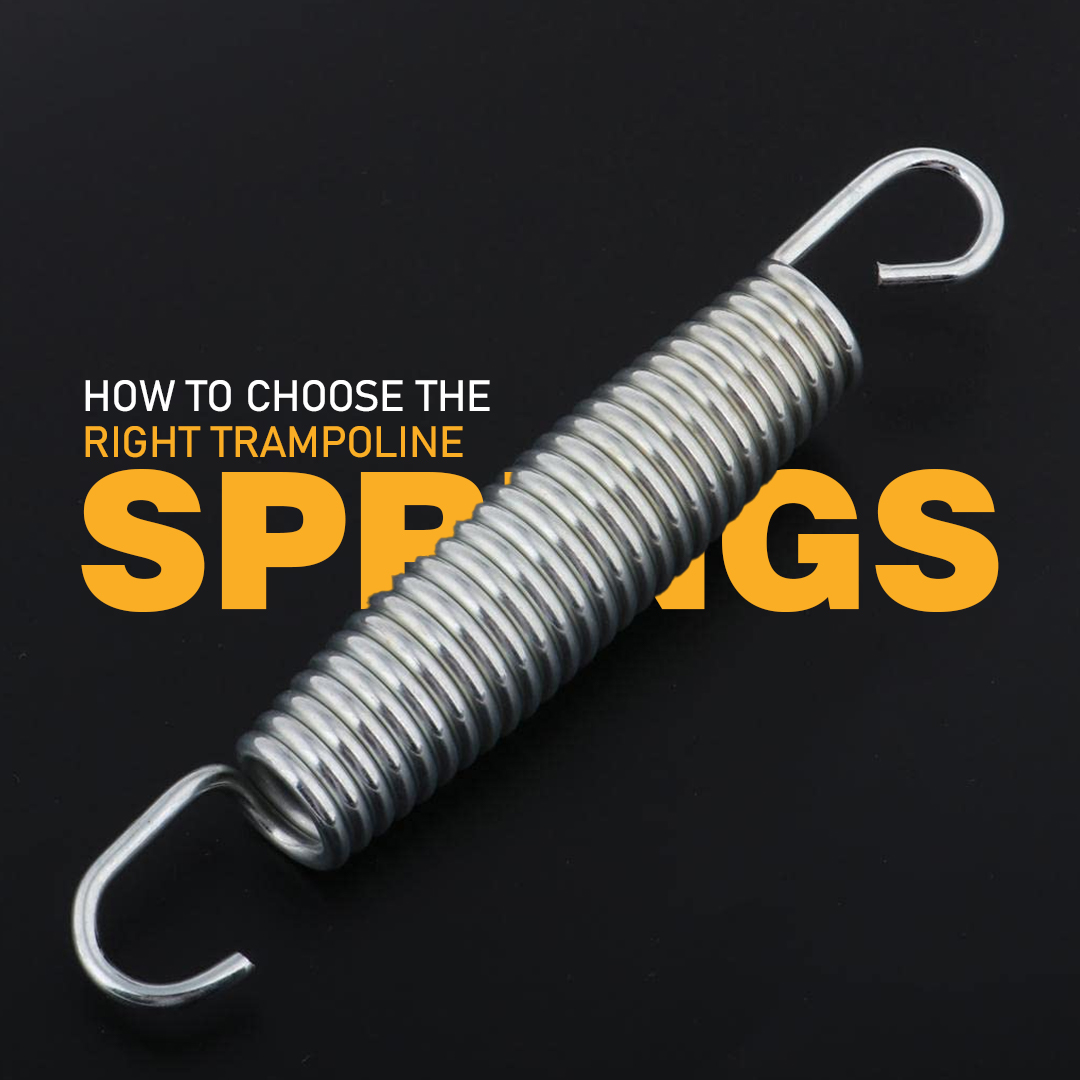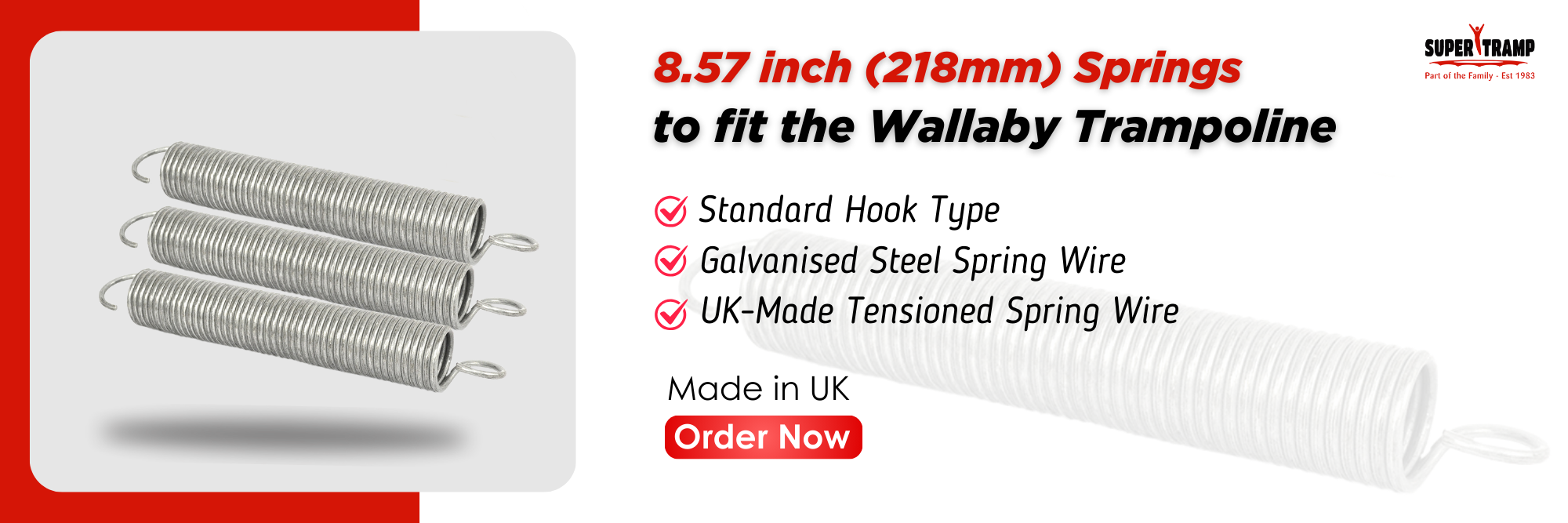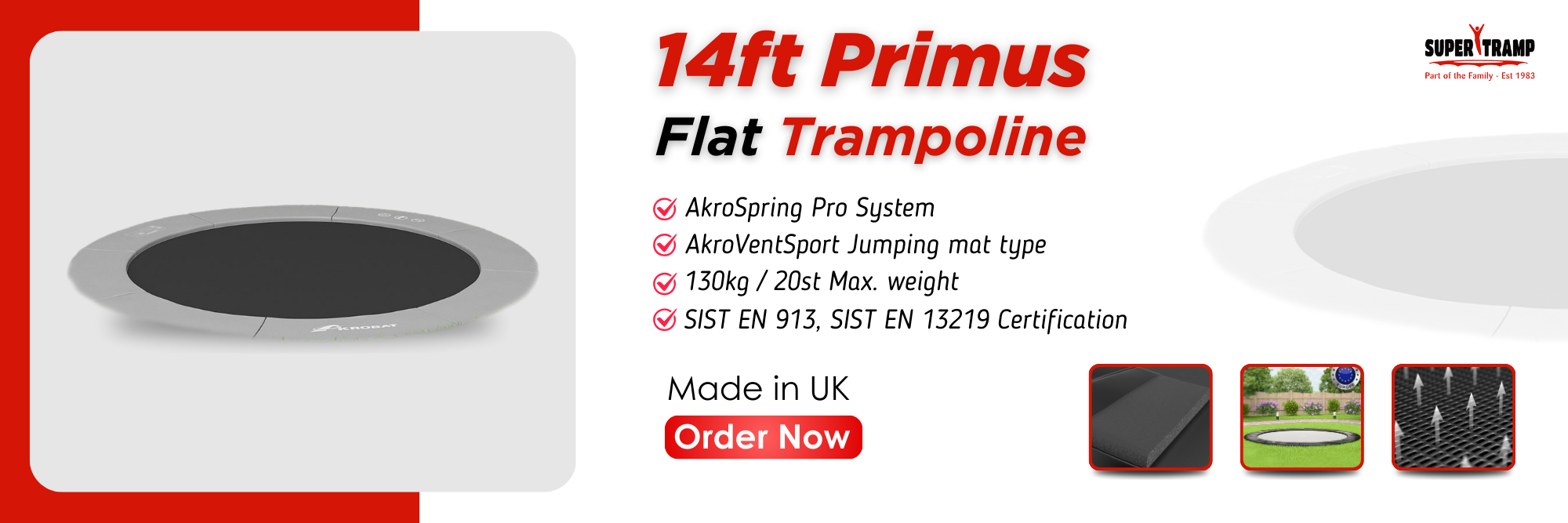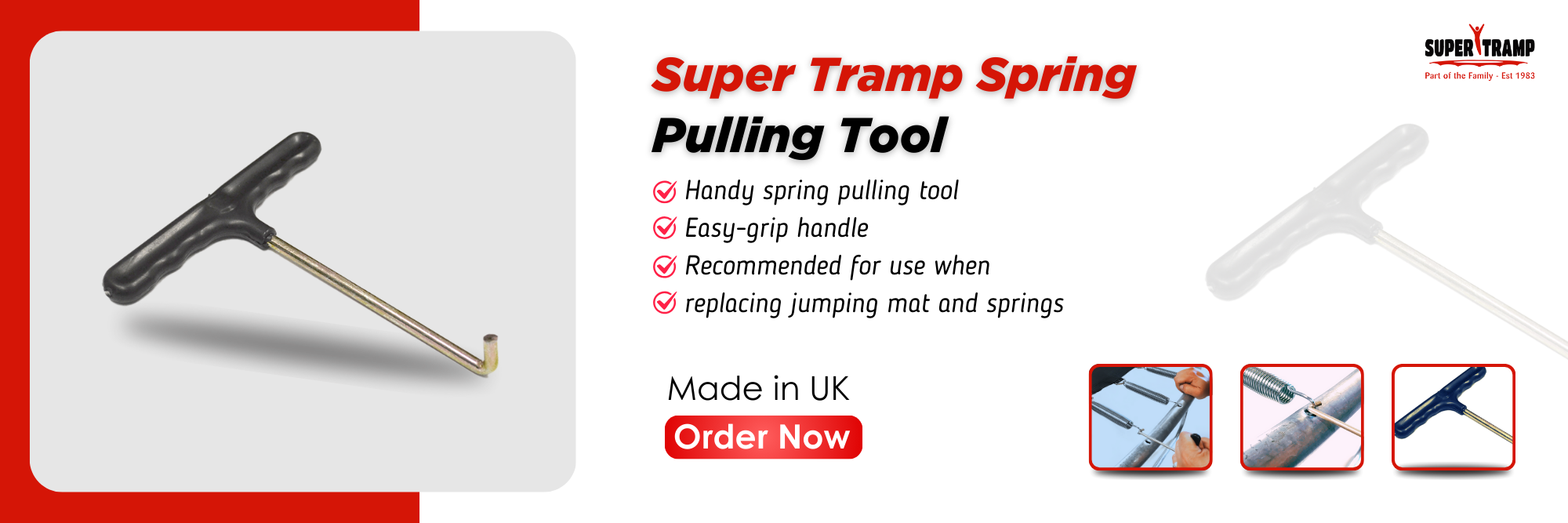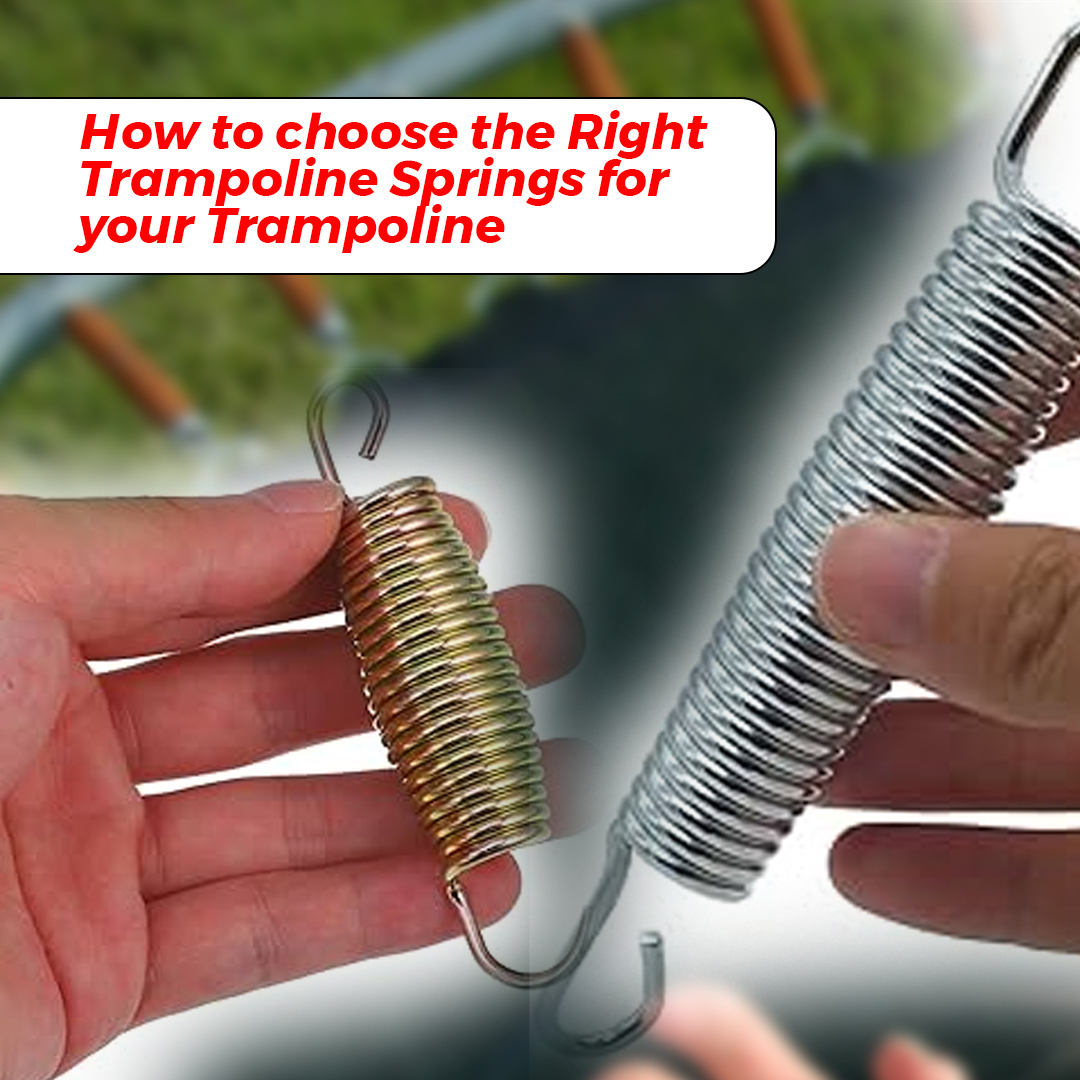
You know how important it is to choose the right trampoline springs for your trampoline. After all, the springs are crucial for giving you that perfect bounce and hours of jumping fun. But with so many types and sizes of trampoline springs out there, it can get confusing. How do you know which ones to pick? Well, don’t worry, we’ve got you covered.
Table of Contents
ToggleWe’ll look at the different types, sizes and materials so you can find the perfect fit for your trampoline. And we’ll also give you some top tips for getting the springs on and off when it’s time to replace them.
In this article, we’ll walk you through everything you need to know about trampoline springs.
Understanding Trampoline Springs
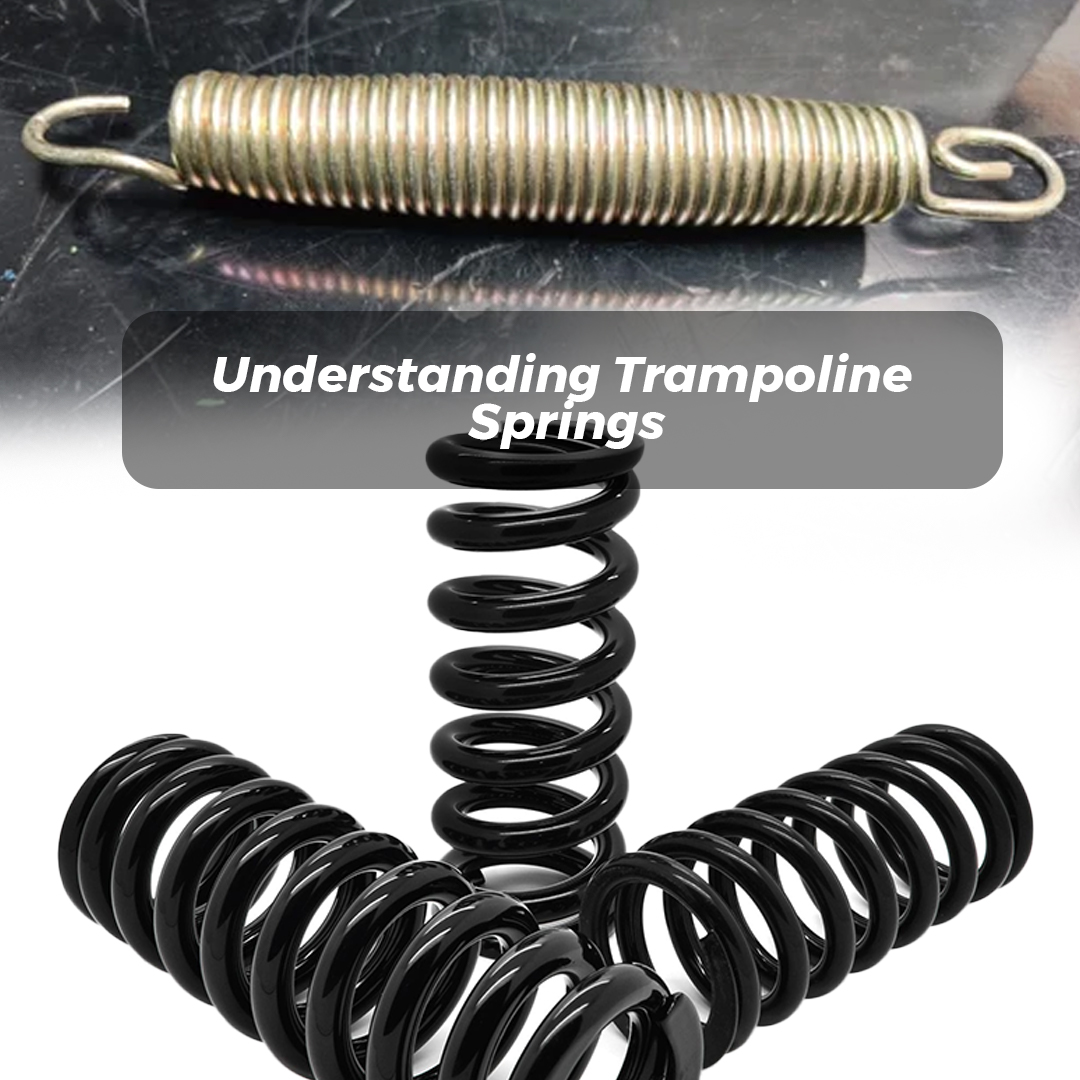
The springs on a trampoline are essential for its functionality. They attach the trampoline bed to the frame and provide the ‘bounce’ by compressing and expanding to convert the energy from your jump into kinetic energy. There are two main types of trampoline springs: coil springs and tension springs.
Coil Springs
Coil springs are the most common. They’re made of steel and coil around the frame. As you jump, the springs compress and store the energy, then release it to lift you up. Coil springs come in different strengths depending on the size and weight limit of the trampoline. Stronger springs will provide more bounce for bigger 14ft trampoline and heavier jumpers. If you need to replace any coil springs, be sure to get the correct strength and size for your trampoline.
Tension Springs
Tension springs, also known as leaf springs, are flat strips of flexible steel attached to the top of the trampoline legs. As you jump, the springs bend and flex to provide bounce. Tension springs tend to provide a softer, more progressive bounce compared to coil springs. However, they can be more difficult to adjust and replace. Tension spring trampolines may cost slightly more, but some jumpers prefer the different bouncing experience they provide.
The type and strength of the springs, along with the quality and tension of the trampoline mat, have a significant impact on how much bounce your trampoline has and how high it will lift you. When purchasing a garden trampoline, consider the spring type and specifications to make sure it will provide the experience you want. Replacing old, worn out springs can also help bring an ageing trampoline back to life and make it safer to use.
Factors to Consider

The springs are what give a trampoline its bounce, so choosing springs that can handle the combined weight of anyone who will be jumping on it is critical. The heavier the users, the stronger the springs need to be. As a general rule:
- For under 200 lbs total weight, go with 6-inch trampoline springs made of steel wire that is at least 2 mm thick. These are suitable for casual recreational bouncing for kids and teens.
- For 200 to 350 lbs total, choose 8.35 inch springs with 2.4 to 2.7 mm steel wire. These are good for families and recreational use by adults.
- For over 350 lbs total weight, select extra-strong 10-inch springs with 3 mm steel wire or more. These heavy-duty springs are best for serious jumpers, athletes in training, and larger groups.
- If any single jumper weighs over 200 lbs, you’ll want the next level up in spring strength to handle the impact. It’s best to overestimate rather than under-estimate the spring strength needed.
The spring configuration or number of springs can also affect the weight limit. More springs means more strength and support for heavier loads. Most 12ft trampolines have between 64 to 108 springs, spaced evenly around the outer edge of the jumping mat.
When deciding on springs, think about the primary users of your trampoline and any friends they may have over to play. Choose a spring type rated for at least 20-30% more than the total weight of the heaviest users to ensure adequate bounce and prevent damage to the springs or mat. Properly matched springs will give the best performance from your trampoline and keep jumpers safe for years of enjoyment.
Does this help explain how to determine the right trampoline springs for your needs? Let me know if you have any other questions.
Trampoline size
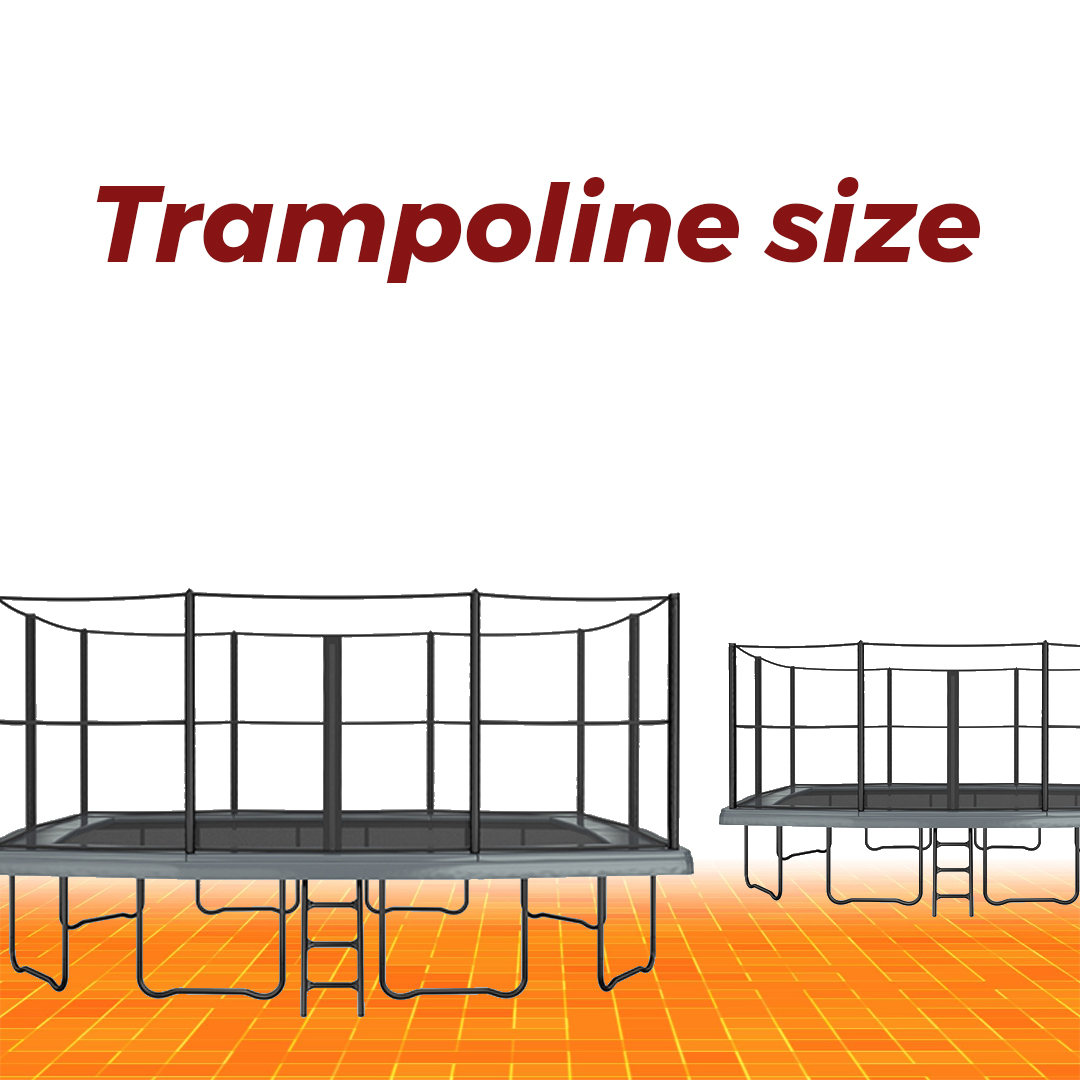
The size of your round trampoline will determine what strength and quantity of springs you need. Larger trampolines require more, stronger springs to support the weight of jumpers and maintain tension, while smaller trampolines can use fewer, lighter springs.
For a small fitness trampoline (6 to 10 feet in diameter), 66 to 84 springs with a minimum gauge thickness of 1.5 mm should work well for most average-sized adults and children. These provide enough bounce and stability for casual jumping.
Medium-sized rectangle trampolines (12 to 14 feet) will typically require 96 to 108 thicker springs, around 1.75 to 2.0 mm gauge for the average user. Stronger jumpers may prefer springs on the higher end of this range for more lift and tension.
Large performance trampolines (15 feet and up) need at least 108 to 128 heavy-duty springs rated 2.0 mm gauge or more to handle the forces generated by multiple jumpers. For the best performance, choose springs on the higher end of the recommendations for your trampoline’s size.
In summary, use these guidelines:
- 6 to 10 feet: 66 to 84 springs, 1.5 mm gauge minimum
- 12 to 14 feet: 96 to 108 springs, 1.75 to 2.0 mm gauge
- 15 feet and up: 108 to 128 springs, 2.0 mm gauge or greater
While more springs and thicker gauges will provide more bounce, they also increase the cost. For casual recreational jumping, springs in the mid to upper end of the range for your in-ground trampoline size should work great for most families and budgets. But for serious gymnastics, always choose the maximum number of springs and gauge recommended for maximum lift and safety.
The size of your trampoline and the springs you choose are directly related and important for getting the right amount of bounce, support, and safety for your needs. Make an informed choice based on how you plan to use your trampoline.
Spring Material and Durability
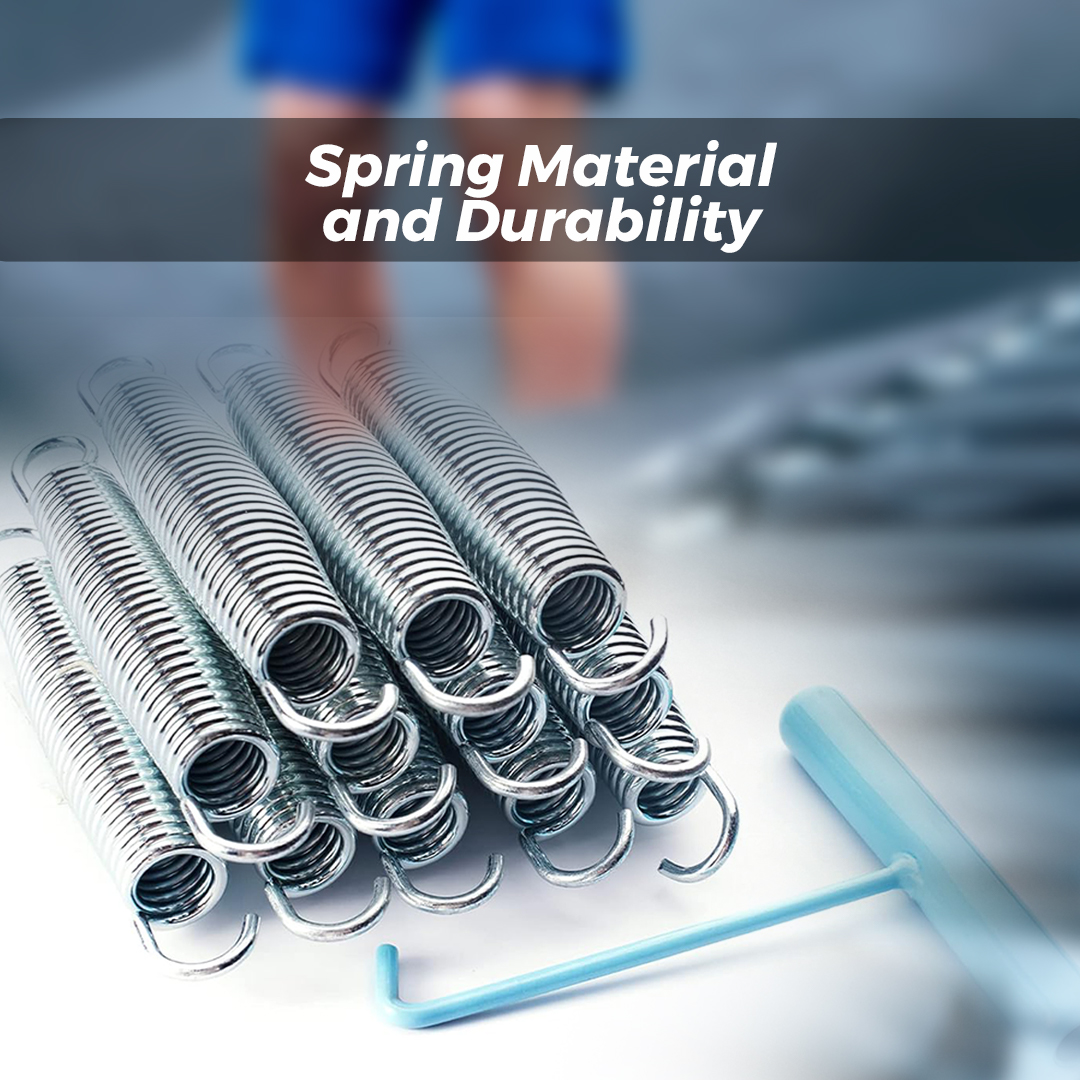
Choosing springs made of high-quality, durable materials will ensure your trampoline provides safe, consistent bounce for years to come.
galvanised steel is a popular, economical choice for trampoline springs. It’s steel that has been coated in zinc to prevent rust. galvanised steel 8.5 inch springs can last 3-5 years with regular outdoor use. However, the zinc coating will eventually wear off, allowing the springs to corrode. For the best longevity, look for springs with a thicker galvanising layer.
Zinc-plated steel springs have an electroplated zinc coating that bonds directly to the steel. This creates a more durable finish than galvanising and can double the lifespan of springs to 6-10 years. The zinc plating process also allows for a thinner, more uniform zinc coating. Zinc-plated steel springs may cost slightly more upfront but can save you money by avoiding frequent spring replacements.
Stainless steel springs are the most durable and longest-lasting option. Stainless steel contains chromium that forms an oxide layer to prevent corrosion. Stainless steel springs can last 10-15 years and provide consistent bounce throughout their lifespan. However, stainless steel springs tend to cost significantly more than galvanised or zinc-plated steel.
In the end, you need to weigh the initial cost of the springs versus how often you want to replace them. For most families, zinc-plated steel offers a good balance of affordability and longevity. Be sure to consider your climate as well, since coastal or humid areas may require more corrosion-resistant options to maximise the life of your trampoline springs.
Spring Tension and Bounce Quality
Tighter, higher-tension springs will give you a firmer, more energetic bounce, while looser, lower-tension springs provide a softer, more gentle bounce.
- For recreational jumping and younger kids, lower tension is typically safer and more comfortable. Loosening the springs slightly can soften the bounce and reduce impact forces on the body.
- For gymnastics, jumping tricks or competitive training, higher spring tension is usually preferred as it gives athletes more lift and control. Tightening the springs will increase the responsiveness and power of the mat, allowing for higher jumps and more complex aerial manoeuvres.
- Most trampolines come with a standard spring configuration that aims for a balance of safety and performance for casual home use. However, many also allow you to adjust the tension to suit your specific needs and skill level. Loosen or tighten the springs in small increments, testing the bounce with each adjustment.
- As a general rule of thumb, a bounce height of around 6 to 8 feet for a 150-pound adult jumper indicates a moderately firm and energetic bounce suitable for recreational and beginner aerial skills. Higher than 10 feet signals a very responsive bounce ideal for experienced jumpers and gymnasts.
By tuning your trampoline springs to the optimal tension for your intended use and skill level, you can achieve the perfect blend of lift, control, and safety. Start with the standard configuration, then make small changes and re-test the bounce to hone in on your desired sweet spot. The ability to customise the spring tension means a trampoline can grow with you as your skills progress.
Maintenance Tips

To keep your trampoline springs in good working order and ensure maximum safety, perform regular maintenance checks and upkeep.
Routine Checks
Every few months, do a visual inspection of all the springs on your trampoline. Look for any springs that appear bent, rusty or damaged. Check that all springs are securely attached to the frame and mat, and none are missing or hanging loose. Replace any springs that show signs of wear or damage right away.
It’s also a good idea to tighten all the springs with a spring pulling tool or wrench to the recommended torque setting, usually around 20 to 25 foot-pounds. Loose or unattached springs can be a hazard, so tightening them will help prevent accidents and injuries.
Signs of Worn-Out Springs
Over time and with frequent use, trampoline springs will start to weaken and lose tension. Some indicators that your springs may need replacement include:
- The mat sagging or bouncing unevenly.
- Springs that won’t tighten or seem permanently stretched out.
- Noisy squeaking or grinding sounds coming from the springs.
- Rust or corrosion on the springs which can weaken the metal.
- The trampoline is not bouncing as high as it used to.
As a general rule, trampoline springs should be replaced every 3 to 5 years depending on usage and quality. It’s best to replace all the springs at once to ensure even tension across the mat.
By performing regular spring checks and maintenance, you’ll help extend the life of your trampoline and keep it safe for jumping. Be sure to also follow the recommended weight limits for your trampoline size and model. With the proper care and upkeep, you’ll be bouncing safely for years to come!
Conclusion
In conclusion, picking the right trampoline springs is vital for a good bouncing time. Whether you go for coils or tension springs, it’s essential to understand their types and strengths. Coil springs are common and strong, suitable for various trampoline sizes. Tension springs offer a softer bounce and are preferred by some.
Consider things like weight, trampoline size, and spring material when choosing. Follow the guidelines based on weight and size to get the right bounce, support, and safety. The durability of springs, influenced by materials like galvanised or stainless steel, affects how long they last.
Adjusting spring tension is important for getting the bounce you want, whether for fun or gymnastics. Regular checks, like looking at the springs and tightening them, help keep the trampoline safe and lasting longer.
In short, take time to understand and choose the right trampoline springs for you. This ensures a smaller trampoline that fits your space and gives a fun and safe bouncing experience.
FAQ's
Is it safe to jump on a trampoline with one spring missing?
No, it is not safe to jump on a trampoline with one spring missing. Each spring contributes to the trampoline’s even tension and stability, and a missing spring can lead to an unsafe and uneven bouncing surface.
How often should you replace trampoline springs?
Trampoline springs should be replaced every 5-7 years, depending on usage and exposure to weather conditions. Regularly inspect springs for signs of wear, rust, or damage and replace any compromised ones promptly.
How much should trampoline springs stretch?
Trampoline springs typically stretch 20-30% of their original length. Overstretching can compromise their elasticity and affect the trampoline’s performance. Ensure springs are within the recommended stretch range for optimal safety and functionality.
Are shorter or longer springs better for a trampoline?
The length of trampoline springs depends on the trampoline’s design. Follow the manufacturer’s guidelines for the correct spring length, as using the wrong size can affect performance and safety.
How do I know what size trampoline springs I need?
Refer to the trampoline’s user manual or contact the manufacturer to determine the correct size of replacement springs. Consider factors like trampoline size, weight capacity, and design specifications to ensure a proper fit.

